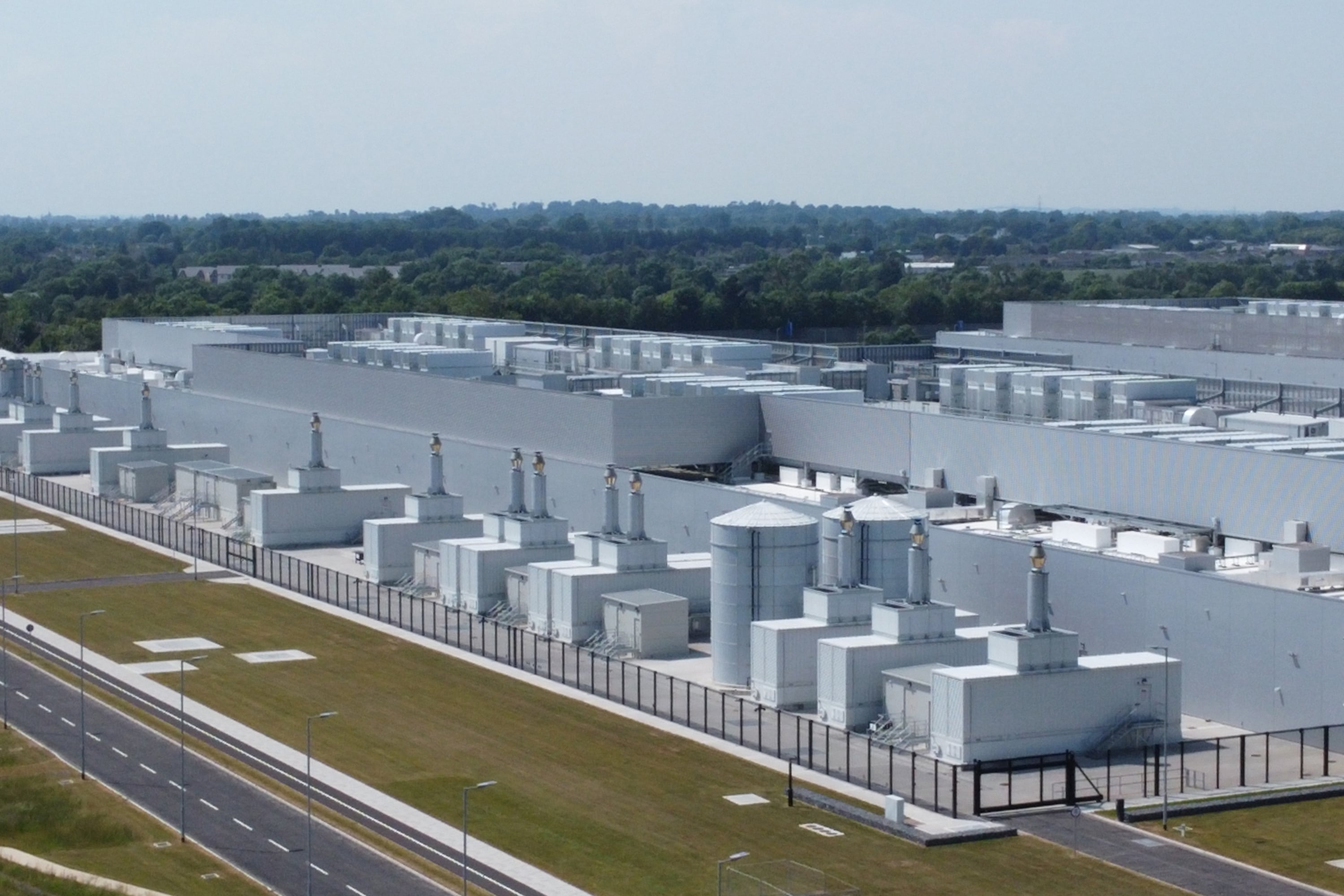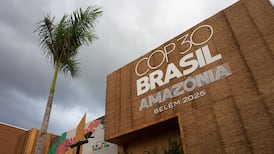The transition away from fossil fuels is key to addressing the climate crisis and this topic has already been contentious months before the global climate change meeting — Cop29 — taking place in Azerbaijan in November. But where is Ireland in the move away from fossil fuels?
We are increasingly seeing ever more clearly the impacts of climate change in the growing number of extreme weather events, for example, the unrelenting heatwaves this summer in Europe, followed by devastating floods in September and also growing numbers of devastating forest fires in North America.
Climate change science shows us that meeting our energy needs by burning fossil fuels releases carbon dioxide and this, together with the release of other greenhouse gas pollution associated with agriculture and other activities, is causing climate change.
Ireland’s Climate Change Assessment Report showed its greenhouse gas emissions peaked in 2001 and have reduced since then. This peak and reduction is good news in terms of our contribution to climate change, but what is behind these changes? In particular, what is happening in terms of fossil fuels, which still dominate our energy mix?
READ MORE
According to the International Energy Agency, all fossil fuels are anticipated to peak globally before 2030. This marks a significant development, signalling the beginning of the end of the fossil fuel era. The data for Ireland on fossil fuel usage in the period 1980-2023 (UCC analysis drawing on SEAI and ESRI data sources) indicates Ireland’s overall fossil fuel usage has already peaked in 2008 at 184 TWh (terawatt hours) and has reduced since then, as shown in the graphic.
The trends in fossil fuel use over the past few decades reflect different narratives of Ireland over that time frame. Ireland’s population grew by one million people between 1990 and 2008 and we experienced strong economic growth in this period also, notably during the late 1990s and early 2000s.
Both of these factors prompted a strong increase in the energy demand. Freight transport increases associated with construction, manufacturing and commercial services prompted an increase in diesel use.
The growing adult population, higher incomes and improved roads all led to an increase in private cars, with car ownership per person nearly doubling by 2008 compared with 1990 levels. The size of the cars we drove also increased. This resulted in growth in petrol usage in particular.
The increase in the number of houses together with the growth in house sizes and in household income all resulted in an increase in kerosene and natural gas usage for heating. Electricity usage also increased in our homes as we purchased more and more appliances.
Some of the factors driving fossil fuel growth changed abruptly due to the global financial crisis and Ireland’s economic downturn in the five year period from 2007. This explains why fossil fuel usage peaked in 2008, but not why it did not continually increase again over the past 10 years from 2013 onwards in line with economic recovery.
This is because the trends in fossil fuels, in particular in the period since 2000 sometimes masked the underlying fuel switching, energy efficiency gains that were introduced along with the increases in renewable energy.
Fossil fuel usage would have been higher than it was had it not been for improvements in building energy performance due to tighter building regulations, improved car engine efficiency, and more recently home energy upgrades. These efficiency effects were bolstered by the growth in renewable energy in the past 15 years in particular, which further reduced fossil fuel usage.
As a result, the past decade was marked by Ireland’s economy growing by 43 per cent, but the fuel switching, efficiency and renewables have combined to reduce fossil fuel use in this period by 6 per cent.
This is the story of total fossil fuel use peaking, but what about individual fuels?
Focusing on individual fuels, coal and peat both reached their peak contribution to Ireland’s energy supply during the 1980s, firstly peat in 1985 and then coal in 1989. In both cases these solid fuels were used both for electricity generation, but also to a lesser extent for home heating, with small amounts of coal also used in manufacturing.
Since peaking in the 1980s, both fuels have been in decline, especially as a fuel for home heating as open fires were replaced with oil and then gas central heating systems. More recently, the use of coal and peat electricity generation has also reduced.
The use of peat as a fuel for electricity generation ended in 2023 as planning permission expired for the last remaining plant. Coal-fired electricity generation at the Moneypoint power plant is due to end in 2025. To ensure the security of electricity supply, while new generation capacity is built, the Moneypoint power plant will shift from coal to oil-fired electricity generation.
Oil has dominated Ireland’s energy supply for the past half-century at least, accounting for more than half of Ireland’s total fossil fuel usage for most of that period. Oil demand was highest in 2005 when it peaked at 106TWh and then plateaued before dropping after 2008 during the economic recession. From 2013-2022, oil grew by less than 1 per cent annually on average due to growing demands in transport.
Natural gas grew steadily over the 20 years between 1990 and 2010 and appears to have peaked in 2010. It subsequently dropped by nearly 20 per cent over the next three years but since 2013, natural gas use has grown by less than 1 per cent annually on average, due primarily to increases in gas-fired electricity generation.
Renewable energy is increasingly contributing to the decline of fossil fuels, with the renewables contribution to Ireland’s overall energy supply increasing over 10-fold from 2TWh in 1990 to 23TWh in 2023. Renewable energy now provides over 14 per cent of total energy supply and more than half of all indigenous energy in Ireland.
Wind energy is our dominant form of renewable energy, followed by bioenergy which includes woody biomass, renewable waste, biodiesel (blended with diesel), bioethanol (blended with petrol) and renewable gas. Solar energy is also starting to grow rapidly as we see the installation of rooftop solar panels and the deployment of solar farms.
What does this mean for our energy security?
Ireland’s energy remains however dominated (86 per cent) by fossil fuels and because of this, most of Ireland’s energy is imported, leading to energy security risks. In 2023 our energy import dependency was at 78 per cent, with less than one-quarter of it coming from indigenous sources.
Previously, natural gas from the Kinsale gasfield contributed significantly to Ireland’s indigenous energy supply in the 1990s. After a lull in indigenous natural gas supply during the early 2000s, production at the Corrib gasfield helped to reduce our energy import dependency to below 70 per cent from 2015.
As this gasfield has depleted, however, Ireland’s energy import dependency has grown again. While most of our renewable energy is indigenous and our limited remaining peat usage comes from indigenous sources, we imported almost 78 per cent of our natural gas requirements and 100 per cent of our oil and coal in 2023.
Risks associated with this dependence on imported fossil fuels have been evident since 2001 as we faced a cost-of-living crisis associated with significant price increases in natural gas and electricity in particular, but also in petrol, diesel and home heating oil.
Continued dependence on fossil fuels prolongs our exposure economically to fuel price fluctuations internationally due to geopolitical events that we do not control.
The peaking in fossil fuel usage is a clear indicator the energy transition to a low-carbon, fossil fuel-free future is under way in Ireland. The rapid acceleration of this energy transition makes sense from an economic as well as an environmental perspective. The question remains whether we have the political and societal will to finish the job in a planned and timely manner.
Prof Brian Ó Gallachóir is associate vice-president of sustainability at University College Cork
- Sign up for push alerts and have the best news, analysis and comment delivered directly to your phone
- Join The Irish Times on WhatsApp and stay up to date
- Listen to our Inside Politics podcast for the best political chat and analysis
















